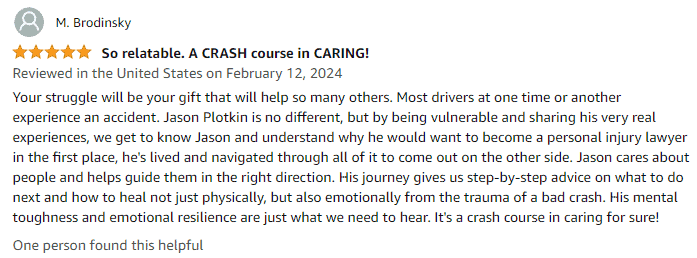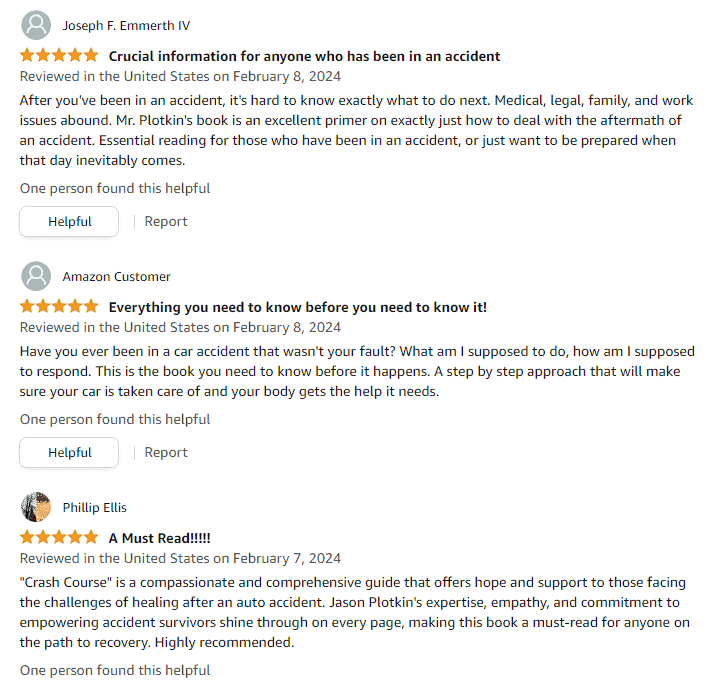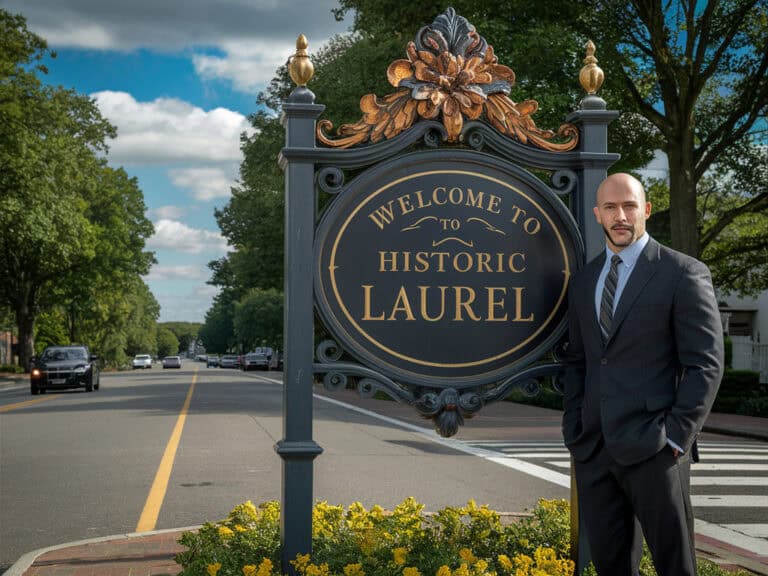Imagine the journey of healing and getting back on your feet after a car crash. That’s what car accident recovery is all about. This article walks you through the whole nine yards—from dealing with physical injuries like broken bones and soft tissue damage to tackling emotional turmoil.
Embarking on this journey, we’ll explore the transformative power of rehabilitation methods such as physiotherapy and spinal manipulation in restoring movement and alleviating discomfort. Plus, we’ve got insights from survivors who turned their ordeal into advocacy, offering legal tips that could save you headaches down the road.
And because nobody likes surprises, especially from insurance companies post-accident, we’ll share strategies to keep them in check. By the end of this read, not only will you know how to support your body’s natural healing process but also how to prep for preventing future mishaps. Embarking on this path, today signifies a pivotal moment towards healing and safeguarding your future well-being during your car accident recovery.
Table Of Contents:
- The Journey to Recovery After a Car Accident
- Navigating Treatment Options for Car Accident Injuries
- Navigating Treatment Options for Car Accident Injuries
- Understanding Common Car Accident Injuries
- Legal Insights from a Survivor Turned Advocate
- Strategies for Dealing with Insurance Companies Post-Accident
- The Importance of Seeking Medical Attention Immediately
- How to Support Your Body’s Natural Healing Process
- Preventing Future Injuries Through Awareness and Preparation
- FAQs in Relation to Car Accident Recovery
- Conclusion
The Journey to Recovery After a Car Accident
Crash Course: To Recovery and Beyond
Jason Plotkin published Crash Course, To Recovery and Beyond in February 2024 and it quickly became a best seller. Click here to join the Crash Course newsletter.
Understanding the Physical Recovery Timeline
Recovering from a car accident is no sprint; it’s more like running a marathon with hurdles. How quickly you bounce back hinges largely on how bad your wounds are and what kind they happen to be. Minor injuries might see you back on your feet in weeks, but more serious ones, such as traumatic brain injuries or spinal cord damage, could take months or even years for full recovery.
A crucial first step is getting an accurate diagnosis which often involves X-rays for broken bones or MRIs for soft tissue and spinal injuries. Treatment plans are tailored specifically to each individual’s needs – ranging from surgery for internal bleeding to physical therapy sessions aimed at regaining mobility.
Patience becomes your best ally because healing doesn’t always follow a straight line. It’s normal to have good days mixed with bad ones as your body recovers at its own pace. But remember, every step forward brings you closer to reclaiming your life pre-accident.
Emotional Healing and Mental Well-being
Beyond the visible scars lies another aspect of accident recovery that often goes unnoticed: emotional healing. Experiencing anxiety, flashbacks, or depression after an auto accident isn’t uncommon—it signifies our mind trying to process trauma just like our body heals physical wounds.
Finding support through counseling services can make all the difference in navigating these turbulent waters. Joining support groups where others share similar experiences provides comfort in knowing you’re not alone during this journey.
Maintaining mental well-being plays an integral role throughout this entire ordeal; adopting stress-reduction techniques such as meditation helps manage anxiety levels effectively while also supporting overall mental health during what may feel like an endless road towards recovery.
Navigating Treatment Options for Car Accident Injuries
The Role of Physical Therapy in Recovery
In aiding bodily recovery post-car crash, PT proves invaluable by focusing on specific areas affected by injury in you car accident treatment plan—be it muscle strains within the rib cage area due to complications from wearing seatbelts during impact moments, herniated discs resulting in spine alignment issues sustained from forceful jolts commonly associated with vehicle collisions, etc.PT sessions not only help relieve pain but importantly increase mobility gradually allowing patients to regain independence over time, especially those suffering severe accidents who find themselves initially unable to perform everyday tasks without assistance. Experts across the board highly endorse this therapeutic approach. They see results firsthand among numerous clients recovering from varying degrees of damages incurred on a daily basis.
Navigating Treatment Options for Car Accident Injuries
After a car accident, figuring out the best path to recovery can feel like trying to navigate through a maze without a map. With so many treatment options available, it’s crucial to understand what might work best for your specific injuries.
The Role of Physical Therapy in Recovery
Physical therapy stands as a cornerstone in the journey towards regaining mobility and reducing pain after an auto accident. This form of treatment works wonders by focusing on specific areas that have been impacted by the crash. Navigating through the aftermath of a car accident, physical therapy adapts its strategies to cater specifically to your personal health challenges, be they minor bruises or more complex issues like spinal trauma or slipped discs.
In a standard approach, you’d be doing movements aimed at enhancing movement and beefing up the muscles near the injuries, not just speeding up healing but also warding off further problems down the line. It’s all about getting you back on your feet safely and effectively.
To see how physical therapy has helped others bounce back from similar situations, consider exploring stories shared by those who’ve walked this path before at American Physical Therapy Association.
Chiropractic Care for Soft Tissue Injuries
If you’ve experienced soft tissue injuries following a car crash, chiropractic care could be another essential piece of your recovery puzzle to reduce pain and reduce inflammation or car accident-related pain. These professionals specialize in treating musculoskeletal issues that are common after accidents—think whiplash or strains affecting soft tissues like muscles and ligaments.
By realigning your backbone with targeted tweaks and massages, chiropractors ease discomfort and foster recovery in the hurt regions. The goal? To get everything moving correctly so your body can do its natural healing thing better than ever.
Anecdotes from individuals who found relief through chiropractic treatments post-accident underscore its potential benefits—making it worth considering if traditional medical approaches haven’t fully addressed your discomfort. Discover more about how this practice supports injury recovery here.
Pain Management Strategies Beyond Medication
Beyond physical therapy and chiropractor visits lies an array of alternative pain management techniques that some find beneficial during their car accident injury recovery process. This includes acupuncture known for relieving pain associated with traumatic brain injuries and other ailments resulting from crashes. Acquiring these services often involves collaboration between healthcare providers ensuring holistic support throughout one’s rehabilitation journey. Explore further into non-traditional methods such as yoga meditation both acclaimed for their effectiveness in strengthening mental well-being alongside the physical body’s repair. Delve into resources online or chat with your doc about weaving these routines into your everyday life after a car crash, which could majorly shift the trajectory of your recovery.
Understanding Common Car Accident Injuries
Car crashes not only mar your vehicle but can also pitch a range of injuries at you, from slight scrapes to grave health issues. Let’s unpack the kinds of injuries folks commonly walk away with and what those mean for recovery.
The Impact of Traumatic Brain Injuries
Traumatic brain injuries (TBIs) are some of the most serious outcomes of car crashes. They occur when a sudden trauma causes damage to the brain. Symptoms might be immediate or take days to appear, including headaches, confusion, blurred vision, and in severe cases, changes in personality. These symptoms underscore why TBIs should never be taken lightly—they’re as serious as they sound – a brain injury is always serious.
Beyond immediate effects, traumatic brain injury, TBIs, can have long-term implications on one’s quality of life—ranging from cognitive challenges to physical disabilities. The road to recovery may involve specialists like neurologists and occupational therapists who work together towards rehabilitation goals which could span months or even years according to CDC guidelines. Early diagnosis and treatment plans play crucial roles in managing these impacts effectively.
Spinal Cord Concerns After an Accident
In car accidents where forceful impact occurs, spinal cord damage is a real threat especially bone fractures and internal injuries — one that carries potential for permanent change in strength, sensation below the site of injury including paralysis in worst-case scenarios. Prompt medical care is crucial for this kind of harm, as acting quickly might halt additional injury.
Recovery from spinal cord injuries involves a multi-disciplinary approach involving physiotherapists for mobility training; occupational therapists help adapt living spaces for new levels of mobility; pain management specialists tackle chronic discomfort issues while psychologists support emotional well-being through this profound life transition. Rehabilitation during your accident case focuses on maximizing independence at home and community reintegration—a journey meticulously planned based on individual patient needs documented by research into spinal cord injury recoveries.
No matter if it’s shoulder pain from strapping yourself too tight against an impending collision or head pain signaling something deeper like a concussion; soft tissue damages such as whiplash affecting muscles around the neck area; broken bones ranging anywhere within one’s rib cage due directly related contact points during crash events—each requires its unique treatment protocol tailored specifically towards optimizing healing processes while minimizing risk factors associated future complications potentially arising post-recovery period efforts aimed preventing recurrence incidents down line leading healthier lifestyle adjustments post-accident experiences shared among survivors alike providing hope amidst chaos created moments of unexpectedness. Navigating through recovery, each survivor embarks on a path of personal development and enlightenment, despite the hurdles encountered, thus guaranteeing informed guidance and support throughout their healing journey.
Legal Insights from a Survivor Turned Advocate
Jason A. Plotkin isn’t just any attorney; he’s a car crash survivor who transformed his personal ordeal into a powerful advocacy for others facing similar battles. His unique journey equips him with an unparalleled understanding of the physical, emotional, and legal complexities involved in recovering from auto accidents. Watch his story here.
The Crash Course To Recovery and Beyond
Journeying through the aftermath of a car accident can feel like navigating uncharted waters. Jason illuminates this journey, providing not only a beacon of hope but also practical guidance for navigating the turbulent aftermath and legal battles that follow an accident. Jason’s perspective, steeped in personal experience, offers a unique and priceless treasure trove of wisdom for navigating the often murky waters of personal injury law.
Navigating Treatment Options: The Legal Perspective
Treatment after an accident isn’t solely about physical recovery; it’s also entwined with your legal case. From choosing doctors familiar with court proceedings to ensuring treatments are properly documented, every decision has implications beyond health—impacting potential settlements or verdicts significantly.
Aiding Your Body’s Natural Healing Process While Building Your Case
While medical professionals focus on healing injuries directly related to car accidents such as traumatic brain injuries or spinal cord damage, there’s another layer of support necessary—the kind provided by knowledgeable attorneys guiding you through insurance claims without compromising treatment integrity. By integrating the pursuit of health restoration with the quest for legal vindication, individuals no longer face a dichotomy but rather tread on twin trails that converge at the juncture of holistic recuperation.Learn more about balancing treatment plans within legal strategies here.
Fighting Back Against Mistreatment By Insurance Companies
Mistreated by insurance companies? You’re not alone—but you also don’t have to stand alone if equipped with the right knowledge tools provided by seasoned advocates like Jason Plotkin working tirelessly to ensure rights are protected and interests are represented throughout the entire claim process, thus leveling the playing field against corporate giants. Seemingly daunting odds seem much more manageable, and the mission to obtain fair compensation deserved becomes a reality rather than a distant dream.Discover how to fight back effectively against unfair practices here.
Jason A. Plotkin uses his own car crash experience to offer unique legal and recovery insights, showing you don’t have to choose between healing and justice—they can go hand in hand.
Strategies for Dealing with Insurance Companies Post-Accident
Facing insurance companies after a car accident can feel like entering a maze without a map. Especially when you’re feeling mistreated by these corporations, it’s crucial to arm yourself with the right strategies.
Document Everything
The first step in ensuring your rights are protected is documentation. Keep records of all communications with your insurance company, including emails and phone calls. Gathering this proof becomes a cornerstone should any disagreements emerge regarding when or what was discussed. It’s also essential to document any expenses related to the accident—medical bills, repair costs, even mileage driven to doctor appointments—all contribute to illustrating the impact of the incident on your life.
Beyond this immediate paperwork, maintaining a detailed journal documenting how injuries from the accident affect your daily activities could prove beneficial. Crafting a narrative from your own experiences can reveal the profound effects of an incident in ways that mere numbers and figures might fail to capture, enriching discussions or legal deliberations.
Negotiate Assertively
Navigating the intricate dance of negotiation with insurance adjusters, who typically boast a deeper understanding and expertise in claims handling than oneself, is akin to mastering an elaborate art. However, armed with thorough documentation and clear understanding of what constitutes fair compensation for your losses—including both direct costs like medical expenses and indirect ones such as lost wages—you’ll stand on firmer ground.
A helpful tactic is never accepting the first offer immediately; instead ask why it was set at that level and how they calculated it. If their proposal seems low—which unfortunately happens quite frequently—don’t hesitate to counteroffer backed by rational arguments supported by your gathered documents.
Know When To Seek Legal Help
Sometimes negotiations stall or insurers act unreasonably towards legitimate claims—a situation nobody wants but many find themselves in nonetheless. Consumer Reports discusses options available if you face denial or unfair treatment regarding claims processing or settlement amounts offered are grossly inadequate given documented damages suffered due simply because navigating complex legal territories becomes necessary here rather than optional as previously thought possible initially upon embarking upon post-accident recovery journey thus far. That’s where professionals specialized in auto accidents come into play: hiring experienced attorneys familiarized not only laws governing motor vehicle incidents but also tactics employed commonly across industry deter unjust practices effectively thereby leveling playing field substantially between individual claimants large corporations typically wielding significant power over proceedings up until point representation sought out diligently pursued earnestly every step way thereafter too ensuring fairness prevails end ultimately benefiting those harmed needlessly beginning once tragic event unfolded unexpectedly changing lives forevermore potentially otherwise left uncompensated properly recognized appropriately so through appropriate channels legally established societal norms upheld consistently throughout process entire duration essentially guaranteeing justice served adequately respects accorded deservedly so indeed truly matter utmost importance everyone involved parties concerned directly indirectly alike
Document everything post-accident and negotiate assertively with insurance. If needed, don’t hesitate to get legal help to ensure fair treatment and compensation.
The Importance of Seeking Medical Attention Immediately
After a car crash, the clock starts ticking on your recovery. Many people believe they can just “shake off” the shock and resume their normal activities. But here’s why that’s like playing roulette with your health.
Why You Can’t Afford to Wait
Some injuries, especially internal ones or brain trauma, are sneaky villains. They might not send out pain signals right away. This means you could be seriously hurt and not know it until much later when the problems have worsened. Grasping the concept of traumatic brain injuries underscores the importance of swift identification to mitigate enduring harm.
In cases where emergency care is required, time is even more critical. Internal bleeding or spinal cord damage needs immediate intervention to prevent life-altering consequences.
Seeking Medical: Not Just For Emergencies
Beyond emergency scenarios, seeking medical attention serves another vital role – documentation. When you visit a doctor after an accident, every injury gets recorded in your medical history. This detailed record becomes indispensable if legal action becomes necessary because it connects your injuries directly to the accident.
This step also kickstarts the process of crafting a tailored treatment plan for you – addressing everything from minor scrapes to deep tissue bruises that may seem trivial at first but can cause significant discomfort down the line.
Treatment Plans: Your Roadmap To Recovery
Delving deeper than just handing out pills, a well-rounded recovery strategy often embraces physiotherapy to bolster movement and muscle power in impacted regions, all the while easing agony with specialized drills. Physical therapy, in particular, plays a pivotal role in aiding recovery by helping injured parties regain lost functionality without resorting immediately to invasive procedures such as surgery unless absolutely necessary.
In some instances, chiropractic care makes its way into treatment plans as well, especially for soft tissue injuries resulting from car accidents—offering another non-surgical route towards alleviating discomfort and promoting healing through manual adjustments that help realign body structures improperly jostled during impact.
The Immediate Steps Post-Accident:
- If possible take photos of the scene right away. These serve as visual evidence supporting claims made later on both the insurance front and legal proceedings should there be any dispute over what happened.
- By moving vehicles out of traffic when it’s safe, we can prevent more accidents from happening. This step keeps everyone safer, including the responders who come to help.
Don’t play roulette with your health after a car crash. Seek medical attention immediately to catch sneaky injuries, kickstart your recovery with a tailored treatment plan, and document everything for potential legal action. Physical therapy and chiropractic care can be key in regaining strength without surgery.
How to Support Your Body’s Natural Healing Process
Understanding the Physical Recovery Timeline
After a car accident, your body goes through a complex healing process. The timeline for recovery can vary based on the severity of injuries and individual health factors. Initially, you might experience inflammation, which is your body’s natural response to injury. Navigating through this stage is pivotal as it establishes the foundation for recuperation; adeptly handling this swelling can alleviate discomfort and expedite the healing journey.
To aid in reducing inflammation and supporting blood flow to injured areas, adopting an anti-inflammatory diet rich in fruits, vegetables, lean proteins, and healthy fats is beneficial. Incorporating salmon, berries, nuts, and verdant greens into your meals can significantly bolster your body’s defense against inflammation due to their rich nutrient profiles.
In addition to tweaking your diet, ensuring you drink enough water is crucial for keeping blood circulation at its best. Proper hydration ensures that nutrients reach damaged tissues more efficiently while also facilitating the removal of waste products from injury sites.
Emotional Healing and Mental Well-being
The psychological impact of car accidents often parallels physical injuries in terms of its significance on overall recovery. Feelings of anxiety or depression post-accident aren’t uncommon; thus recognizing these emotional responses as part of the healing journey becomes essential.
To support mental well-being during this time, practicing relaxation techniques, such as deep breathing exercises or meditation, can be incredibly effective tools not just for coping but actively improving one’s mental state following trauma. Engaging with a supportive community, whether through group therapy sessions or informal meet-ups, provides an outlet for sharing experiences which inherently fosters resilience against stressors encountered after an accident.
Navigating Treatment Options for Car Accident Injuries
Treatment plans post-car accident should always be personalized, taking into account specific injuries sustained by each individual involved. Despite this, some treatments like physiotherapy and chiropractic adjustments are broadly acknowledged for their effectiveness in managing a spectrum of issues stemming from vehicular mishaps. Both modalities have shown significant success in increasing mobility and reducing pain, especially when dealing with soft tissue injuries resulting from collisions. However, opting for treatments demands a thorough evaluation by the medical team to ensure the chosen approach aligns best with the long-term health objectives of the person undergoing the rehabilitation process. Hence, the importance cannot be overstated of seeking professional advice in the early stages and assessing the viable options available for those recovering from automotive mishaps.
Considering the potential benefits alongside the possible risks associated with interventions ultimately facilitates informed decision-making conducive to speedy functional restoration for sufferers alike. Emphasizing the criticality of prompt action in the commencement of therapeutic measures, the absence of delays significantly improves the prospects of achieving full remission. This underscores why it’s so crucial to start treatment as soon as possible; quick action can truly make a difference in recovery outcomes.
Speed up your body’s healing after a car accident by eating anti-inflammatory foods, staying hydrated, and tapping into emotional support. Remember, quick treatment decisions can boost recovery.
Preventing Future Injuries Through Awareness and Preparation
Measures to Take to Minimize the Risk of Future Car Accidents and Injuries
Road safety is no joke. Despite advancements in vehicle technology, car accidents still happen all too often. But hey, there’s good news. By being proactive about awareness and preparation, you can significantly cut down your risk of getting into another fender bender—or worse.
The first step towards prevention? Understanding what leads to accidents in the first place. Distractions are a major culprit—yes, that quick glance at your phone could end badly. Speeding is another biggie; it reduces reaction time and increases impact severity. And let’s not forget about driving under the influence; just don’t do it.
So how can you arm yourself against these risks? Start with defensive driving courses—they’re like having a protective shield around your car (metaphorically speaking). They teach you essential skills such as anticipating other drivers’ moves and maintaining control in slippery conditions.
Tips for Enhancing Vehicle Safety Features
Your car’s safety features aren’t just fancy add-ons; they’re lifesavers—literally. Ensure your ride is equipped with anti-lock brakes (ABS), electronic stability control (ESC), airbags all around, and if possible, advanced driver-assistance systems (ADAS) like automatic emergency braking or lane-keeping assist.
Regular maintenance goes hand-in-hand with techy features though. Check those tires regularly for wear-and-tear; ensure brake pads are up to snuff; replace windshield wipers before they start streaking—you get the picture.
If buying or leasing a new vehicle soon, do some homework on its safety ratings via reliable sources such as NHTSA’s crash test ratings. A higher number of stars indicates superior safeguarding in the event of collisions.
Cultivating Mindful Driving Habits
Mindfulness isn’t just for yoga class—it belongs behind the wheel too. Staying present while driving drastically lowers accident odds because you’re more attuned to potential hazards ahead of time rather than reacting last minute when it might be too late.
This means keeping distractions at bay by setting up hands-free devices beforehand if needed but also trying not to daydream or zone out even on familiar routes where autopilot mode tends to kick in hard-core.
Last but certainly not least: Always buckle up—that seatbelt isn’t optional attire. It’s one simple click away from saving lives, including yours. Remember folks, cars are replaceable, humans aren’t. Let’s keep ourselves and our loved ones safe by making it a habit to strap in before we hit the road.
Slash your risk of car accidents by staying sharp and prepared. Take defensive driving courses, keep your car’s safety features in check, and drive mindfully to protect yourself and others on the road.
FAQs in Relation to Car Accident Recovery
How long is recovery after being hit by a car?
Recovery time varies widely. Minor injuries might heal in weeks, while severe ones can take months or even years.
How do you recover from a traumatic car accident?
Prioritize both physical and mental health. Seek therapy for trauma and follow your doctor’s plan for physical recovery.
Why do I feel weird after a car accident?
This feeling often stems from the shock and adrenaline rush post-accident. It’s your body’s natural response to stress.
How do you recover from shock after a car accident?
Talk about it with loved ones or professionals, rest up, eat well, stay hydrated, and give yourself time to heal.
Conclusion
So, you’ve journeyed through the ins and outs of car accident recovery. You’ve discovered that mending goes beyond the body, touching the mind as well. From chiropractic care to managing insurance companies, the road is comprehensive.
Engaging in activities such as physiotherapy can utterly transform the way you heal. Emotional well-being is as crucial as mending bones.
Just so you know, getting medical help right away can really shape the path of your recovery journey. And knowledge? It’s your best defense against future accidents.
Preparation minimizes risks; awareness saves lives. Consider this handbook your lighthouse, guiding you through the aftermath of a collision and into safer waters ahead.
Your steps forward from here are informed ones—towards health, towards safety, towards resilience. Car accident recovery starts with knowing what to do next.
Don’t take our word for hit, check out these reviews of Jason Plotkin’s book.








